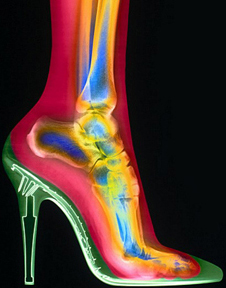Top Ten Cybernetic Upgrades Everyone Will Want
Science fiction, computer games, anime… cyborgs are everywhere. Transhumanists are philosophers who believe that one day, cybernetic upgrades will be so powerful, elegant, and inexpensive that everyone will want them. This report lists ten major upgrades that I think will be adopted by 2050.
The List
10. Disease Immunity

Between 20 and 40 years into the future, we will become capable of building artificial antibodies that outperform their natural equivalents. Instead of using chemical signaling that relies on diffusion to reach its target, these antibodies will communicate with rapid acoustic pulses. Instead of proteins, they will be made using much more durable polymers or even diamond. These antibodies will move through the bloodstream more quickly than other cells in the body, and will take up less space and resources, meaning that there will be room for many more.
Using super-biological methods for identifying and neutralizing foreign viruses and bacteria, these tiny robots will still function in harmony with our own bodies. They will probably be powered either by glucose, ATP (like natural antibodies), or acoustically. There are already bloodborne microbots today which are not rejected by the immune system — these are the precursors of tomorrow’s nanorobotics. Through their presence and continued operation, they will eliminate all susceptibility to disease in those who have them running through their veins. This will not make people immortal, but it will allow them to walk into a room contaminated with a flesh-eating virus in nothing but a pair of shorts and a T-shirt. For more on artificial antibodies and other body-integrated nanites, see Nanomedicine.
9. Telemicroscopic, Full-Spectrum Vision

There are microscopes that weigh one tenth of an ounce. Some birds of prey have vision so sharp that they can spot a hare a mile away. We have compact devices that can scan the electromagnetic spectrum from x-rays to radio waves, and everything in between. Our eyes in their current form can do none of these things. But in time, they will be upgraded. There are already prosthetic retinas that can provide low-resolution artificial vision for blind people.
It’s simply a matter of time until better prosthetic eyes are created, and their sharpness, contrast, and resolution is superior to what evolution gave us. The biggest challenge may end up not actually being about building a superior artificial eye, but remodeling the visual cortex so that it can process the info and relay it to the rest of the brain in such a way that it’s not overwhelmed.
8. Telepathy/Brain-Computer Interfacing

Ever wanted to send someone a message with nothing but your mind, or have a neural implant that gives your brain direct access to Google? Hundreds of corporate and academic labs across the world are working on projects that generate progress in this area. Check out the Berlin Brain-Computer Interface, which lets you move the cursor around on a screen with only your EEG waves and 20 minutes of training.
Miniature fMRI will allow us to continue increasing the bandwidth between brain and computer, eventually allowing for a “mental typewriter” that converts thoughts into text. A tiny transmitter could send this to a bone-conduction device on the receiving person, letting them hear the message without sound. NASA is also working on a device to transcribe silent, “subvocal” speech. Like many transhumanist upgrades, these will probably start as efforts to help people who are handicapped, then evolve into powerful tools that can be used by anyone bold enough to adopt them.
7. Super-Strength

Early in 2006, scientists at the University of Texas at Dallas, led by Dr. Ray H. Baughman, developed artificial muscles 100 times stronger than our own, powered by alcohol and hydrogen. Leonid Taranenko, the former Soviet weightlifter, holds the world record for power lifting a 266 kg (586 lbs) dumbbell. If Leo’s natural muscles were replaced with Dr. Baughman’s synthetic polymer muscles, he could lift 26,600 kg, or about 30 tons. That’s equivalent to this yacht, the Nova Spirit.
Super-strength is an interesting area in that the technology to do it has already been invented — the only step remaining is actually weaving the fiber into a human body — which, today, would be complicated and messy, not to mention probably illegal.
However, that doesn’t mean that it won’t be done, probably within the next couple decades. Further improvements to the process could make it safe for normal people, numerous ethics questions notwithstanding. One benefit of improved muscles is that we’d be far less vulnerable to unfortunate accidents. They could also provide armor against bullets or other forms of attack. One downside is that people could use them to bully others around. Guess the good guys will need even bigger muscles.
6. Improved Appearance

In general, there is a lot of agreement as to who is attractive and who is less so. Numerous experiments have shown that while there are slight subjective differences in who we want to get with, we are biologically programmed to look for certain facial and physical features that correlate with increased fitness.
For the time being, this is unavoidable. The only way to change it would be to reach inside our neural circuitry and start severing connections. Until we choose to do that, we can improve our own lives — and the lives of those who have to look at us — by looking as pretty or handsome as possible. We brush our teeth, keep fit, take showers, and all that other great stuff that helps us score.
Some of us even visit the plastic surgeon, with mixed results. Surveys show that certain procedures, like liposuction, have very high patient satisfaction rates. As the safety and precision of our body modification technologies improves, we’ll be able to change our faces and bodies with minimal fuss, and maximal benefit.
Everyone will be able to be stunningly attractive. And the really great thing? We’ll always be able to enjoy it. If everyone becomes attractive, we won’t regard the slightly less attractive of the lot as “ugly” — our brain doesn’t work that way. An attractive person is attractive, whether or not others are around. A planet full of attractive people could do a lot to improve our quality of life.
5. Psychokinesis

In the real world, psychokinesis is a bunch of wishful thinking and pseudoscience. Despite the roughly 30% of people who think that it’s possible to affect objects through the mind alone, history and evidence make it clear that this is total nonsense. There are no psychics and there never have been. However, that doesn’t mean that we can’t create technopsychics artificially.
By 2030, we’ll be cranking out utility fog — swarms of tiny machines that fly through the air and interlock with robotic arms. By combining brain-computer interfaces, like the type used by Claudia Mitchell to move her prosthetic arm, with utility fog, we will have direct-thought connections with powerful external robotics, allowing non-fictional psychokinesis. Utility fog, once all the necessary software for it is developed, will be capable of cooperating to perform practically any physical task or simulate a wide range of materials.
Because utility fog could be distributed at low density and still accomplish a lot, a room filled with utility fog would look empty, and people in it could move and breathe normally. They would only notice once the fog is activated — either by a central computer, or a neural interface. Once a connection is achieved, practically anything could be accomplished with the proper programming. Throwing objects through the air, hovering over the ground, cracking an egg from across the room, materializing orbs of energy — all the antics we’ve always wanted to perform, but never had the means to.
4. Autopoiesis/Allopoiesis

Autopoiesis is Greek for self-creation. Allopoiesis is other-creation. Our body engages in both all the time — we start as a fetus that creates itself until it becomes an adult, then, essentially stops. Our body produces things external to itself, but usually involving an extended process of cooperation with thousands of other human beings and the entire economy.
In the future, there will be cybernetic upgrades that allow for personal autopoietic and allopoietic manufacturing, probably based on molecular nanotechnology. Using whatever raw material is available, complex construction routines, and internal nanomanufacturing units, we’ll be able to literally breathe life into dirt. If our arms or legs get blown off, we’ll be able to use manufacturing modules in other parts of our body to regenerate them. Instead of building robots in a factory, we’ll build them ourselves. The possibilities are quite expansive, but this would require technology more sophisticated than anything discussed thus far in this list.
3. Flight

Human flight, outside of an airplane… this was recently achieved by former military pilot Yves Rossy, who flew 7,750 ft above the Alps in his 10 ft wide, self-designed aerofoil. You can see a video of it here. The airfoil weighs only 110 lbs and cost just under $300,000.
Over the next few decades, the weight will come down, the strength and flexibility will go up, and eventually it will be difficult to distinguish between people in aerofoils and people that can just fly whenever they want.
Using high strength-to-weight materials like fullerenes, we will fly using wings that weigh only a fraction of our own weight and fold into our clothing or body when not in use. Rossy achieved speeds of 115 mph, but with superior materials and greater tolerance for acceleration and wind, our cybernetic flight speeds are more likely to top 500 mph. To take off from the ground, we’ll simply use our super-muscles to jump to the highest object around and begin our flight from there. With personal flight, commercial airliners will become obsolete. The only problem left will be dodging each other.
2. Superintelligence

When we think of superintelligence, we tend to think of the ways it is portrayed in fiction — the character able to multiply 6 fifty digit numbers in his head, learn ten languages in a month, repeat the catch phrase “That’s not logical”, and other tired cliches. True superintelligence would be something radically different — a person able to see the obvious solution that the entire human race missed, conceive of and implement advanced plans or concepts that the greatest geniuses would never think of, understand and rewrite its own cognitive processes on the most fundamental level, and so on.
A cybernetic superintelligence would not just be another genius human, it would be something entirely superhuman — something that could completely change the world overnight. For the same reason that we can’t write a book with a character smarter than ourselves, we can’t imagine the thoughts or actions of a true superintelligence, because they’d be beyond us. Whether it is developed through uploading, neuroengineering, or artificial intelligence, remains to be seen.
1. Immortality

The ultimate upgrade would be physical immortality. Everything else pales by comparison. Today, there are already entire movements based around the idea. Realizing the possibility of immortality requires seeing a human being as a physical system — composed of working parts that cooperate to make up the whole, some of which have the tendency to get old and break down.
Cambridge biogerontologist Aubrey de Grey has identified seven causes of aging, which are believed to be comprehensive, because its been decades since a degenerative process has occurred in the body with an unknown cause. Defeating aging, then, would simply require addressing these one by one. They are: cell depletion, supernumerary cells, chromosomal mutations, mitochondrial mutations, cellular junk, extracellular junk, and protein cross-links. A few pioneering researchers are looking towards solutions, but accepting the possibility requires looking at aging as a disease and not as a necessary component of life.
Well then, that just about wraps up our list. See you in 2050, alright?